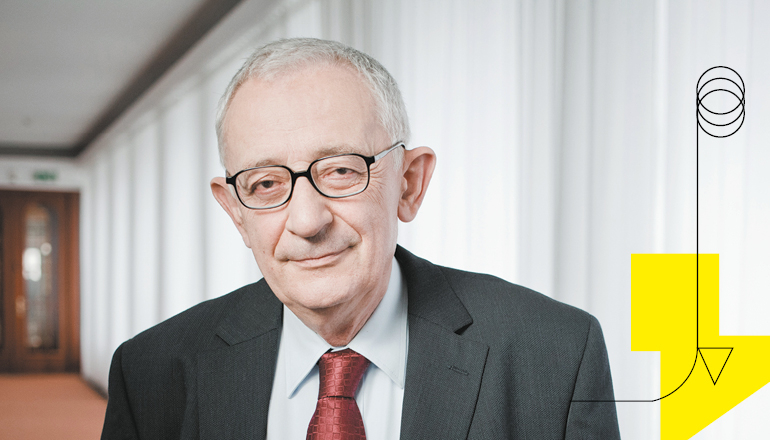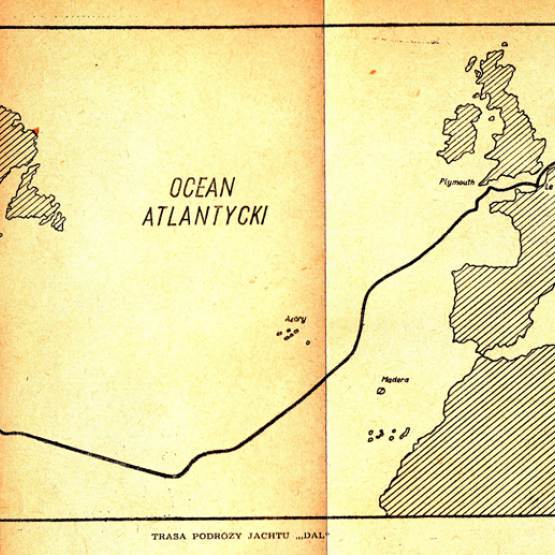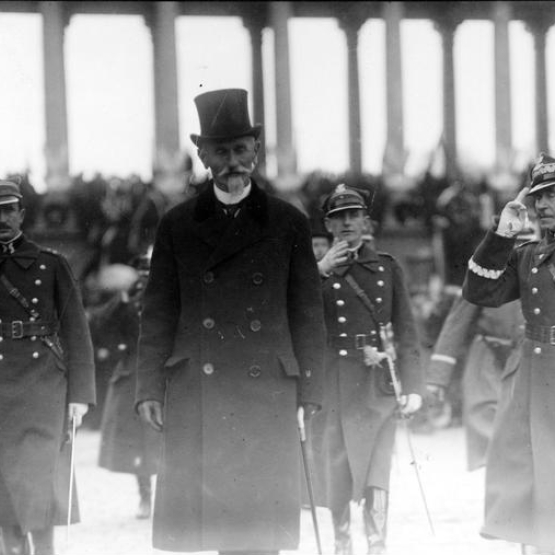
A CONVERSATION OF DOCTOR ADAM CZERNIAK WITH PROFESSOR JERZY OSIATYŃSKI
What in your opinion is the greatest achievement of Michał Kalecki that has survived to this day in science?
Kalecki's most important output is his ‘boom-bust cycle’ theory and dynamics of capitalist economy. In his theory, the indicated economy functions with chronically incomplete use of production factors, in the conditions of oligopolistic competition and with a flat curve of total supply (in the area of usual variability of production volumes). In addition, it contains the theory of the division of the national product between wages and profits based on the ‘degree of monopolisation’, which differed it from both the theory of Keynes and neoclassical economics, in which the division was determined by the extreme productivity of production factors. In Kalecki's theory, economic dynamics and its cyclical course are determined by fluctuations in private investment to which fluctuations in total production and employment are related. The investment decisions of entrepreneurs are a complex function of the expected profits and the degree of use of productive assets and usually they are not enough in themselves to achieve and maintain full employment. If it is impossible to count on export surpluses sent to the rest of the world, debt-financed public expenditure, stimulation of private investment and/or changes in the distribution structure for low-paid and therefore proportionally low-saving households are necessary to ensure full employment.
Does the Kalecki’s cycle theory have anything to do with modern theory of the real business cycle (pol. RCK) and how does it relate to post-Keynesian economics?
It has nothing to do with the real cycle theory. The real business cycle theory simply excludes the existence of a cycle in the real sphere of economy, which always works with a real product equal to a potential product. Therefore, the potential product is subject to fluctuations, not the real product. This is the world where there is no room for insufficient global demand; the restrictions are found only on the supply side. This is the antithesis of Kalecki’s and Keynes' theories.
It is different when it comes to the trend of heterodox post-Keynsian economics, which widely draws on Kalecki's theory. In the cycle theory and economic dynamics, focusing on the relationships between the supply side of investments and their demand effect and on the delay in time between one and the other begins before Kalecki and through Kalecki leads to several trends in post-Keynesian economics. The good beginnings of the indicated theory date back to A. Spiethoff's "pig cycle" …
The indicated concept is known today under the name of ‘pig hill’.
... next Ein Schiffbauzyklus by J. Tinbergen and A. Aftalion. Then comes Kalecki, who formulates a general theory of the business cycle out of it, first without an upwards trend, and then with a trend. Investment fluctuations are the result of cooperation between the income effect, arising during their creation, and supply effect, when after their commissioning they start competing with the existing production apparatus. The fluctuations take place in the real economy, but they affect the stock exchange, where the waves of optimism are intertwined with the waves of pessimism. But in today's reality - contrary to the warnings of Keynes writing about the miserable fate of economy, in which casino-like behaviour governs investments in the real sphere - the turnover of financial and speculative capital (incorrectly called investments) many times exceeds the investments in the production capacity expansion. Thus, next to (and to a large extent independent of it) cyclical course of real investments, we have very strong and irregular fluctuations in financial markets in terms of period and amplitude, which in turn strongly transfer to the real sphere of economy.
The waves of optimism and pessimism chasing each other on financial markets have for various reasons similar turning points as in the theory of production investment cycle, especially at the bottom turning point, when after the phase of growing financing of speculations with loan capital repaid by new loans there occurs the Ponzi effect, a sudden collapse of rates and valuations of pledged assets and their ‘fire’ sale to regain liquidity, a collapse and after it some ‘natural’ bounce back. This is the essence of Minsky's hypothesis of financial instability, which many post-Keynesian economists allude to and because of its similarities to Kalecki's theory, they are often placed side by side. But there are significant differences between them: the cycle mechanism is different, the meaning of financial markets is different, and so on. In my opinion, however, the other question is basic: is the cyclical development of economy primarily determined by the real or by the financial sphere of economy? What should be the Kalecki’s equation of economic dynamics so that it took into account the reality of today's world dominated by financial capital? The Kalecki's theory is developed in this direction by, among others, Amit Bhaduri. Others also try, but we constantly face new phenomena and we are constantly looking for answers.
Is it possible to make the Kalecki’s resoning so far-reaching?
I do not know. But I can, for example, present a few questions to show where the difficulties occur. First of all, along with the rising prosperity, the importance of household savings changed. Kalecki distinguishes two types of savings: undistributed profits and savings of entrepreneurs themselves. The workers' savings are basically irrelevant. Hence, there is his famous saying: ‘Capitalists earn as much as they spend and workers spend as much as they earn.’ Household savings reduce aggregate demand and therefore depress investment. It makes them different from undistributed profits which encourage to them because, among others, they facilitate access to external financing. Well, when the rate of return on financial assets becomes close to or higher than the return rate on investment in fixed assets, entrepreneurs become rentiers and increase their speculative deposits. But then we have to pose a question: is it possible to create economy consisting exclusively of a casino? One goes to a casino with money earned by someone somewhere or borrowed somewhere, and which can be multiplied or lost in the casino. The same is true of the game on financial markets, where one most often plays per procura, through investment and other funds, or there are entrepreneurs who play on them and invest their undistributed profits in securities. But at some point, these undistributed profits must arise in the real sphere. However, when their growing amount is located on financial markets, it must generate stagnant tendencies.
The second limitation concerns the sovereignty of money. The theories of Kalecki and Keynes arose in a world where economies were sovereign over their money and their debt was sovereign, which was an important condition for active fiscal policy.
Globalisation of financial markets has taken away a lot of this sovereignty
This is it. As long as funding came from its own markets, it was provided by its own commercial banks and citizens buying gilt-edged bonds, other long-term bonds or short-term treasury bills, everything could go on. And so far it is going on in Japan, which has a considerable public debt...
Not considerable but the highest in the world.
On their own wish! And what's wrong with that? The Japanese hold these papers and somehow do not believe that the state will collapse because of the debt. They roll up the debt, increase it, the inflation is too low and industry's competitiveness is too high. This also applies to the US economy because the world likes dollar reserves. But it does not apply to other countries, including the euro area. Nowadays, the need for discipline and ‘healthy finances’ is determined not by ‘industry captains’, described by Kalecki in prophetic Political aspects of full employment in 1943, but global financial markets. But if you ask me what the function of investment decisions should be in today's conditions, i.e. the cornerstone of Kalecki's theory so that it took into account new financial and real factors as well as restrictions related to globalisation, I will say that I do not know.
Would Kalecki be able to explain why there is such a low investment rate of companies?
As Joanna Robinson used to say, an investment is a very coltish creature. Entrepreneurs can be extremely easily frightened. They invest their own money. The future is always uncertain and cannot be presented in terms of econometric models, which are numerously present in textbooks on mainstream economics. Unpredictability as to whether future products will find their markets is not a risk and it cannot be put in terms of probability theory. This uncertainty of investing in fixed assets constitutes an additional factor for which potential investors prefer to invest their capital in financial assets - it is easy to change the nature of the deposits or to escape from them. It must lead to a development of stagnation trends, however, not in Poland, which chases developed countries and fills the gap between a real and a potential product, with dynamically rising wages, but in Europe and most OECD countries.
So I will ask another question that bothers mainstream economists. How would Kalecki explain such low inflation at higher than potential economic growth?
If I had gone to Kalecki with it, I can easily imagine what he would have done [laughing]. If I had told him that the economic growth rate was above the potential, he would have been surprised and would have doubted whether it had really been the case. And he would have told me: ‘Sir, my supply curve is like the lying letter L. So if I'm somewhere in the middle or in 2/3 of its horizontal section, why should inflation be present? There is no space for inflation.’ What really matters with Kalecki is, on the one hand, unit labour costs, which may increase slightly, but when simultaneously the costs of raw materials and materials change counter-cyclically, unit variable costs are fixed. And as long as they are constant and the structure of income distribution does not change, you have n-points of employment and production balance at the same level of inflation.
However, is it not the case that we face full employment for the first time in the Polish history and that we are on this part of the Kalecki’s supply curve that is very steeply skewed?
I think you could go even further with this question. For many quarters, the dynamics of nominal wages has been higher than the nominal dynamics of labour productivity. Thus, unit labour costs are rising, but this does not translate into inflation, as profit margins are falling. Why and how long can they fall? What are the companies competing with now? We know too little about it as well as about private investment.
What could young economists who would have to answer the indicated questions learn from Kalecki today?
I think it is essential to keep the feet on the ground. Kalecki wrote to various economic periodicals about the situation on the metal, coal and cereal markets. Together with Ludwik Landau, he made the first estimates of social income in Europe. They had to build various synthetic indicators of the economic situation because there were no such statistics and much had to be invented from the beginning. As an engineer by education, he had the ease of using mathematical tools, but he utilised them sparingly. He made sure that he did not hide empty views behind mathematical formulas. Nothing wraps very nicely.
It is a matter of methodology? What about the area of the philosophy of knowledge?
It is skepticism about existing beliefs but also about own conclusions. When you hear that fiscal tightening is necessary to improve the state of economy, you must ask whether it is really needed and how it is going to happen. When you hear that, on the one hand, unemployment will increase in the short term as a result of the indicated tightening but on the other hand, it will fall in the long run, you should ask if there is a long period that would be a separate entity or anything other than a short-term link chain. Is it possible that something can happen in a long period of time which would not have its seeds in the short term? All these recommendations are reflected in the statement of Joanna Robinson, who - doing a little harm to all of us - called economics a dismal science. If dismal science adepts are to have some satisfaction, they should follow the principle of skepticism about the existing state of knowledge, which is only ‘a set of statements whose falseness has not yet been demonstrated’.
Thank you for the conversation.
Jerzy Osiatyński, Professor of Economics (1989), a graduate of the Central School of Planning and Statistics (1964)
Chairman of the Scientific Council of the Institute of Economic Sciences of the Polish Academy of Sciences (2007–2013) and a member of the Committee of Economic Sciences of the Polish Academy of Sciences (2007–2011), a member of the Economic Research Committee of NBP (2009-2016), a member of the National Development Council of the President of the Republic of Poland (from January to April 2010). ), a social adviser to the President of the Republic of Poland (2010-2013), a member of the Monetary Policy Council (from December 2013)
Minister Head of the Central Planning Office (1989–91), Minister of Finance (1992–1993). In 1995–2008 he was a consultant of the World Bank, UNDP and other international and non-governmental organisations in the field of economic transformation, mainly in the Central and Eastern European countries and the Commonwealth of Independent States. From 2001 to 2006, a member of the Council for Socio-Economic Strategy to the Prime Minister, and in the years 2004–2006 its deputy chairman, a deputy to the Sejm of the Republic of Poland (the 10th, 1st, 2nd and 3rd term).
The author of books, academic textbooks and scientific dissertations in the field of economic theory, public finance, the history of economic thought of the 20th century and the transformation of the economy from the centrally planned to the market one. .
MICHAŁ KALECKI (1899–1970)
From the time of Nicolaus Copernicus, there was no Pole who would make such a significant contribution to world economics as Michał Kalecki – an economist, a researcher at the London School of Economics and the Main School of Planning and Statistics. This year we are celebrating the 120th anniversary of his birth.
Michał Kalecki [...] born in Łódź, was one of the most creative economists of the 20th century [...] Kalecki's place in the history of economic thought was not properly assessed, because - as Mark Blaug said - Kalecki was not in the right place at the right time and did not write in the right language. At least partly for these reasons, J.M. Keynes is generally considered the father of modern macroeconomics instead of Kalecki. Only after Kalecki's papers preceding Keynes' General theory (1936) were translated into English, were his profound, exploratory observations in the field of macroeconomics recognised by the English-speaking economists. Writing in the Marxist tradition and starting from a simple reproduction scheme of Marx, Kalecki built a macroeconomic model explaining the causes of mass unemployment in the 1930s. By incorporating monopoly elements into the theoretical construction, Kalecki created a model with a higher degree of perfection than the Keynes model. Unfortunately for Kalecki's reputation, it happened that at the time when his thoughts were made available in the English translation, the basic Keynesian model was already well established in the Western economic theory and as a result the paternity of modern macroeconomic orthodoxy was attributed to Keynes rather than Kalecki.
(H. Landreth and D.C.Colander, Historia myśli ekonomicznej (The History of Economic Thought), Warsaw 1998, p. 15)




